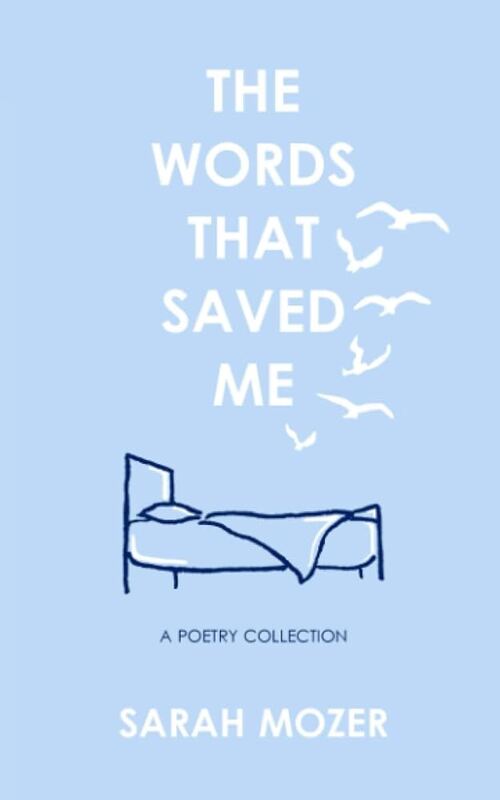Non-Fiction Books By Disabled Voices
World Book Day is the perfect opportunity to celebrate incredible reads by disabled authors! The following list contains just a handful of the many titles that are out there. As well as non-fiction books about disability and lived experiences, there are many disabled people who write fiction or produce books spanning more broader topics than disability alone. However, this list may serve as a starting point if you’re looking for some brilliant new reads.
Stim, edited by Lizzie Huxley-Jones

This book is a collection of creative works from a diverse range of neurodivergent contributors. Some of these contributors express impactful thoughts and describe the social barriers they face, while others celebrate the joy and meaning that can be found by belonging to this community. Each contribution varies in length and form, but many are succinct and easily digestible for people with a shorter attention span or symptoms of brain fog.
The View From Down Here by Lucy Webster

In this memoir, Lucy shares her experiences of navigating life with a severe disability. The topics range from the complex emotions behind recruiting and forming bonds with care workers, navigating the world of dating and a desire to become a parent one day and the love and joy of female friendships that always remains a constant. Above all else, this book serves as a powerful call to arms, to ensure that people’s intersectional feminism includes and empowers disabled women too.
How To Do Life With A Chronic Illness by Pippa Stacey

Often, conversations about chronic illness are deeply embedded in the medical model of disability. This book, however, aims to be a one-stop guide on how people can live their best life alongside their chronic illness, rather than relying on the outdated narrative that people must be healed or experience recovery to live a life that truly brings them happiness. Alongside bespoke advice and guidance, the book contains lived experiences from the author and a diverse range of contributors, spanning topics from adapting your hobbies and accessible ways to socialise, to rediscovering your identity and setting realistic goals for the future.
Go The Way Your Blood Beats by Emmett de Monterey

Emmett has always felt a longing to fit in. But as a black, disabled and LGBTQ+ individual, finding a sense of belonging in an ableist world has been filled with challenges. He openly shares his childhood experiences of being portrayed as the ‘inspirational’ disabled person in the media who medicine declared they would ‘fix’, and the impact that this, and the consequent inability to ‘fix’ him, has had on his sense of self. This book is a stark reminder of the ableism that exists around us and at times can be a difficult read, but ultimately tells the story of how this writer kept on moving forward and found the courage to live as his most authentic self.
All Tangled Up In Autism And Chronic Illness by Charli Clement

In this book, Charli describes and tackles the multiple barriers that come with being both a chronically ill and neurodivergent person. They shed light on the challenges that come with managing competing needs and how sometimes the things that aid one set of access needs antagonise the other, and in doing so they have created a unique and valuable resource for the growing number of people who find themselves tasked with the same challenge. Charli’s book also contains some excellent resource lists where you can find plenty of material for further reading and research.
The Words That Saved Me by Sarah Mozer

If you enjoy poetry or you’re keen to try something different, this newly-released collection chronicles the author’s experiences of living with Severe M.E. – a disabling chronic illness that often leaves individuals housebound or bedbound. Through this book, Sarah offers a profound insight into a world that others rarely get to see. Her words don’t shy away from the loss, hardships, and emotional turmoil she has experienced, but they also tell of the ways she strove to stay true to herself and hold onto hope and light even during the most difficult times.
The Pretty One by Keah Brown

You may know Keah as the founder of the iconic #DisabledAndCute hashtag. The movement went viral on social media at the time it was begun and has remained a well-loved pillar of the online disability community ever since – especially by younger generations of disabled people. In her debut non-fiction book, the author shares a collection of essays about the realities of being black and disabled in the USA, the complexities of growing up alongside a non-disabled twin sister, learning to celebrate herself, and how her undying love of pop culture has influenced the person she’s become.
These titles are just an introduction to a wealth of great material by disabled voices. Reading can provide a huge sense of comfort when we find words we can relate to, but also offers a powerful way to learn about lived experiences that are different from our own. If you have a favourite book by a disabled author, feel free to share it with us on social media!
More from Pippa
- Life of Pippa Blog
- Find Pippa on X
- Find Pippa on Instagram
What To Read Next
World Book Day – AccessAble Libraries by Lucy Wood
AccessAble makes the Disability Power 100… for the fifth year in a row! by Pippa Stacey

